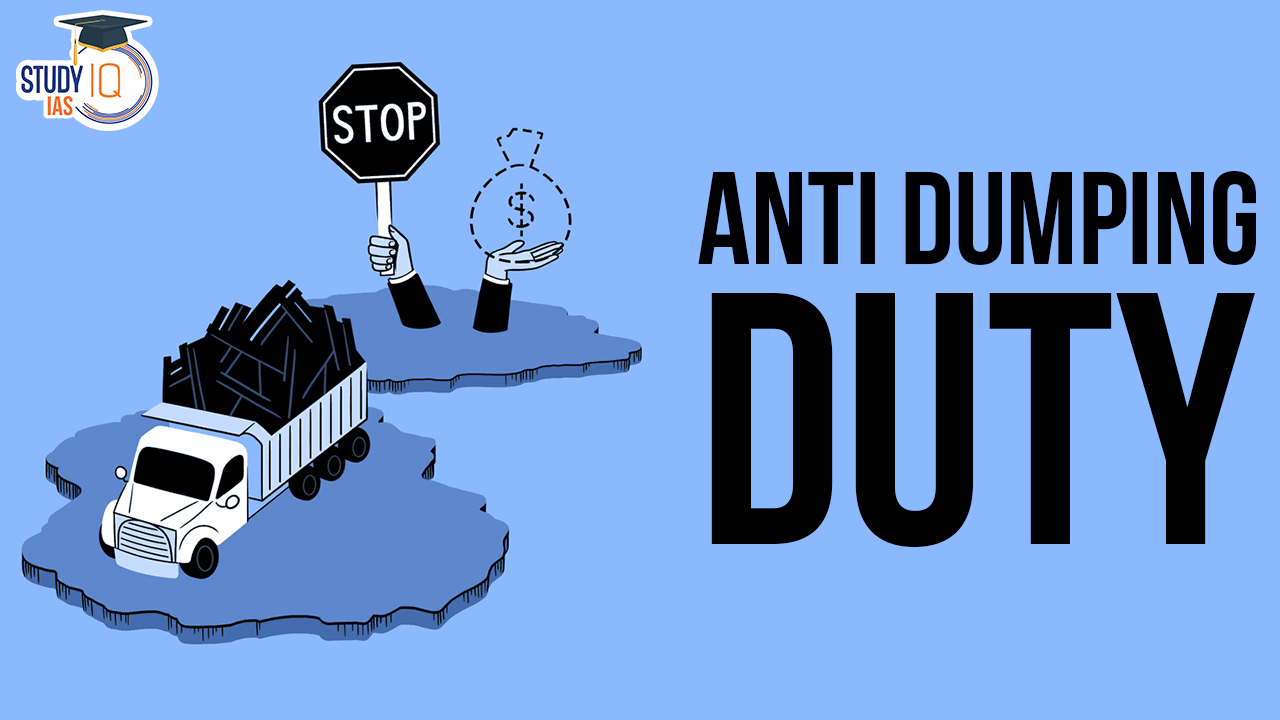Table of Contents
Context: India imposed a 30% Anti-Dumping Duty (ADD) on bare printed circuit boards (BPCBs) to protect domestic PCB manufacturers.
What is Anti Dumping Duty (ADD)?
- Anti dumping duty is a protectionist tariff imposed by a country on foreign imports that are priced below fair market value.
- It prevents unfair trade practices and protects domestic industries from economic harm caused by cheaper imported goods.
- WTO Permitted: Anti-dumping measures are allowed under WTO regulations to ensure fair competition.
- Most Favored Nation (MFN) Status: It is a trade principle under WTO agreements requiring countries to offer equal trade terms to all WTO members.
- India grants MFN status to China, but can still impose anti-dumping duties under WTO rules.
Goals of Anti Dumping Duty
- The primary goal of anti-dumping duty is to safeguard local industries and markets from the adverse effects of such dumping, promoting fair trade practices.
- While anti-dumping duties aim to protect domestic industries, they may inadvertently result in increased prices for consumers within the country.
- This measure seeks to adjust the market distortions caused by dumping and to restore equitable trading conditions.
- While they protect local businesses, ADDs can result in higher prices for domestic consumers and may reduce international competition for domestic producers.
Anti Dumping Duty Administration in India
- In India, anti-dumping measures are implemented by the Directorate General of Trade Remedies (DGTR) under the Ministry of Commerce & Industry. The Department of Commerce recommends the duty, and the Ministry of Finance levies it.
What is Dumping?
- Dumping occurs when a foreign company exports a product at a price lower than its domestic market price or production cost.
- Essentially, it involves selling goods abroad at a significantly reduced cost compared to what they are sold for domestically.
- Dumping can provide advantages in terms of market penetration, but it remains a contentious practice in international trade due to its potential impact on fair competition and domestic industries.
- Legality: Dumping is legal under WTO rules unless the foreign country can reliably show the negative effects the exporting firm has caused its domestic producers.
- To protect their domestic industries from predatory pricing, most nations use tariffs and quotas to counter dumping.
|
Important Terms |
Countervailing Duty (CVD)
Customs Duty
|
WTO and Anti Dumping Duty
- The World Trade Organization (WTO) sanctions the use of anti-dumping duties as a means of maintaining fair competition among nations.
- The WTO permits affected countries to initiate legal proceedings against dumping countries if there’s concrete evidence of significant harm or potential harm to the domestic industry.
- To impose such duties, the affected government must demonstrate the occurrence of dumping, quantify the dumping margin, and establish the actual or potential harm to the domestic sector.
| Important Facts |
Trade between India and China Between FY19 and FY24, India’s imports from China rose from $70 billion to $101 billion, while exports remained steady at $16 billion. |
About Directorate General of Trade Remedies (DGTR)
- Formed in: 1997
- Earlier known as DGAD (Directorate General of Anti-Dumping & Allied Duties), underwent a name change in May 2018.
- Body: It is a quasi-judicial body.
- Nodal Ministry: It operates under the Ministry of Commerce and Industry.
- Purpose: DGTR was established to consolidate efforts into a unified national body responsible for addressing various Trade Remedial actions, including anti-dumping, countervailing, and safeguard measures.
- Function: To ensure fair competition within the domestic market by protecting it against unfair trade practices such as dumping, subsidisation, and sudden increases in imports.
Countervailing Vs. Anti-Dumping Duty
| Aspect | Countervailing Duty | Anti-Dumping Duty |
| Definition | Tariffs imposed to offset the effects of foreign government subsidies on imported goods. | Tariffs imposed to prevent unfair pricing practices where foreign exporters sell goods below fair value. |
| Purpose | To neutralise the financial benefits that foreign manufacturers receive from subsidies. | To protect domestic industries from being harmed by unfairly low-priced imports. |


 Daily Quiz 01 July 2025
Daily Quiz 01 July 2025
 Sagarmala Finance Corporation Limited (S...
Sagarmala Finance Corporation Limited (S...
 Operation Deep Manifest, Key Features an...
Operation Deep Manifest, Key Features an...





















